The Dark Pictures Anthology: The Devil in Me review – A few reservations about Supermassive’s horror season finale
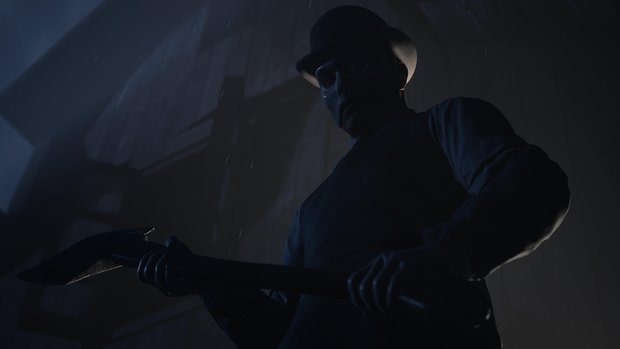
- 0 Comments
Since 2015’s Until Dawn, Supermassive Games has firmly established its modus operandi. Whether it’s the latest entry in the annual Dark Pictures Anthology or a one-off jaunt with a standalone title like The Quarry, long-time consumers of the British developer’s particular brand of spooky narratives know exactly what to expect. From their ensemble casts of characters to nearly identical gameplay elements, there’s little that differs from release to release, other than a new group of unwitting victims being terrorized in new and unique ways, and a plot that puts each of their (very expendable) lives on the only-sometimes-proverbial chopping block.
I’ve had quite an affinity for this formula in the past, so I was disappointed that the final entry in its inaugural four-part Dark Pictures season, The Devil in Me, left me short on thrills and desperately craving chills. Reused gameplay elements like the Quick Time Events during chase sequences or the breathing rhythm mini-game when a baddie is trying to sniff you out of your hiding spot don’t bother me, but spending approximately half the game walking the same dimly lit hallways of a stuffy murder museum should, by rights, have been a far more nerve-wracking experience than it is. Instead, the slow pacing and maze-like environment just snuffed out too much of the game’s potential momentum, causing it to hemorrhage tension in a way that more exciting later set pieces simply couldn’t fully recover from. The game does, of course, feature strong replay value by virtue of its open-ended, choice-based narrative, which can once again be enjoyed alone or with friends online or via couch co-op.
The events in Devil center around a small documentary film crew looking to find their fifteen minutes of fame by following a promising invitation to a deserted island. As a way to cap off a series about famous murderers, the team has its eyes set on covering the infamous real-life American serial killer H. H. Holmes. It comes as a seeming stroke of luck, then, when a mysterious benefactor invites them to visit and film his private island estate, a life-like recreation of Holmes’s Murder Castle, which he is about to open to the public. Sensing an opportunity to infuse some much-needed authenticity into their project, the crew’s director and de facto leader Charlie quickly accepts, and off they go.
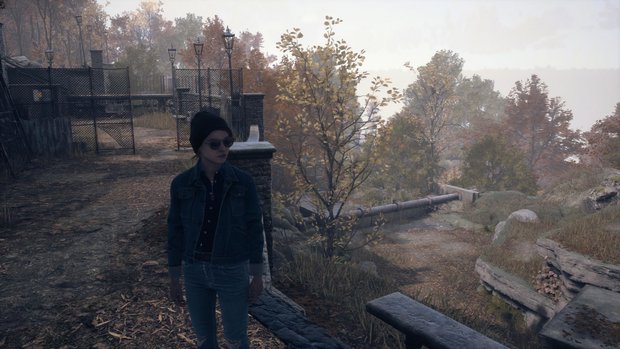
Right from the start, it becomes obvious that this crew has a lot of history with each other, though not necessarily always a friendly one. For example, on-camera reporter Kate and cameraman Mark used to be an item and must now sort out their lingering feelings for each other as peril closes in. Intern-slash-sound-engineer Erin and lighting tech Jamie find themselves on the other foot, making the ill-timed choice to explore sparks of attraction with each other (or not – the player is given a hand in what all characters say or do) at exactly the wrong time and place. However, the whole crew seems united in their dislike for their boss, and that’s before the whole “You brought us to a murder island” plot unfolds.
Unfortunately, I didn’t find that these potential seeds for drama ever paid any dividends. Things happen, and apart from some token screaming and shouting, there’s little that really tugs at the heartstrings when a character is faced with the demise of someone they, only minutes ago, expressed a deep affection for. There’s some intangible quality, some sense of deeper player-character connection, that just appears to be missing this time as characters begin to die off left and right, leaving me unaffected. It’s not the fun, campy “I can’t wait for these obnoxious teenagers to get what’s coming to them” kind of story either. Here it feels more like we’re watching a group of people being kicked while they’re already down, and being stuck in a murder mansion is just one more stroke of misfortune for them.
When the team first arrives on the island, we get to enjoy the last little bit of daylight we’ll see for quite a while as they make their way to the foreboding mansion on foot. This bit, at least, offers some appreciable character-building moments, like Kate helping Mark, who suffers from a crippling fear of heights, cross a rickety bridge. (Perplexingly, this setup only pays off briefly at the very end of the game, and then only if Mark survives that long, which seems like a missed opportunity.)
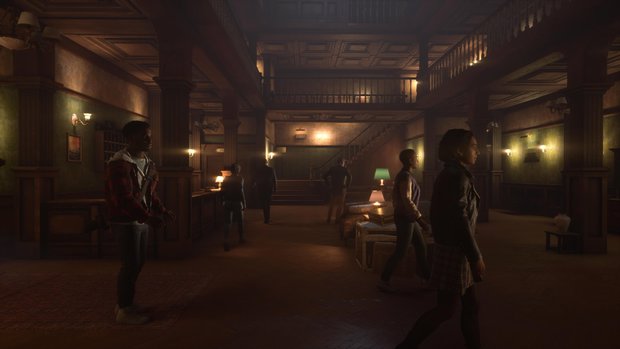
Once the doors slam shut behind them, however, it’s time to settle in for a long haul of guiding one character or another (occasionally even a group of two or three) through the same or similar hallways, guest rooms, and common areas of the hotel. Since there are no other guests in attendance, it’s an empty and dreary place, which offers little visual storytelling in its design. Early on, the crew is still amenable to scouting the building for shooting locations, but as night falls and it becomes clear that they’ve been locked in (with perhaps a disappeared friend here or a dead body there), the focus simply becomes finding a means of escape.
In a first for the Dark Pictures series, Devil does not push for a supernatural angle. Though the infamous serial killer does appear in a pretty cool intro section set in his original World’s Fair Hotel in 1893, in present day H. H. Holmes is long since dead. That means the threat our protagonists face in present day is very much a human copycat who constructs unnerving animatronic mannequins of his victims, incorporating their actual body parts in a fascinating and perverse homage. This murderer uses secret passages throughout the house to herd his “guests” with the use of constantly shifting walls. Though this probably suggests that the game is one big randomized maze needing to be navigated, or features a villain who will pop up at random to hunt you down, that isn’t the case. The path is still generally linear and the action events, such as they are, are scripted and planned, peppered throughout with the obligatory timed dialog responses and QTE sequences from time to time.
The time spent within the hotel is essentially one long cat-and-mouse game, with the killer delighting in leading our hapless heroes into elaborate traps he has previously constructed throughout. One unsuspecting victim may be lured into a walk-in incinerator in search of his missing cigarette lighter, while another, more elaborate setup sees two characters on opposite sides of a moving glass wall that threatens to crush one of them unless you’ve found the right items and made the right choices previously to prevent them from being pancaked. In the spirit of movies like Saw, these traps are over-the-top and violent, but it is quite possible to miss out on them entirely – just as you can miss neat narrative or exploration sections – based on your decisions along the way. There’s one particular trap I’m only aware of because it was featured in one of the game’s unlockable behind-the-scenes video clips, since one of the characters that particular trap was designed for had already died quite early on for me, so I never even encountered it.
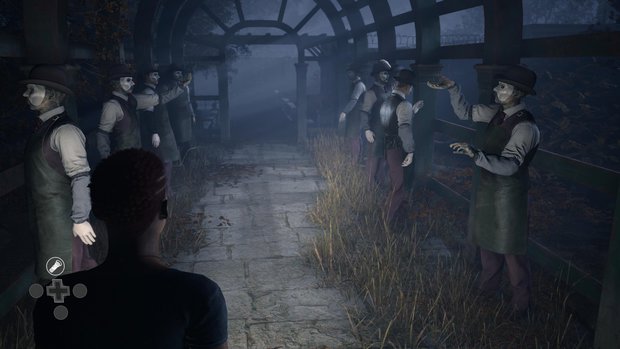
Indeed, it doesn’t take much to bite the dust here. That’s not a knock, just an observation. Case in point: I felt particularly clever having managed, against all odds, to make a number of split-second choices to see Charlie survive a devious trap at one point and walk away only slightly scathed. Little did I know that, just moments later, his life would again be threatened, and this time I was defeated by a mistimed QTE button input, leading to his grisly death after all. In fact, I’d say that the majority of character deaths I experienced (only one survived in my playthrough) were due to bungled button presses, misinterpreted action cues, and even foolishly putting stock in the extremely brief flash-forward warning visions the developer is so fond of including in its games. If there’s one feature I’m somewhat baffled to still see implemented, it’s these snippets of impending doom, as they’re rarely useful and instead often become self-fulfilling prophecies for me, where I unwittingly bring about their exact events by actively trying to avoid them. In The Devil in Me, as in all Supermassive games, life is dirt cheap.
The game will sometimes engage our hapless heroes in its limited take on puzzles. Although these moments are few and far between, the characters have an open inventory slot and can occasionally discover a useful item that might be used later on to escape a trap or operate a switch or some such. In addition, a small handful of powered-down fuse boxes scattered around the island can be reactivated by following a puzzle-style diagram to flip switches in a particular order. These puzzles are all on the simple side, however, and are often simply a matter of a character either possessing a needed item or not. Being unable to complete a task or even dying in a trap room is considered final, and the story carries on either way with or without the newly deceased.
Eventually Devil realizes it can’t contain its characters within the murder mansion for its entire runtime, and so the latter half sees events spread out over other areas of the island. This is greatly to its benefit, as settings like a creepy hedge maze, a subterranean spa facility, and a resort pool with accompanying showers and changing rooms prove to be far more fertile ground for tension than what has come before.
In order to incentivize keeping people alive as long as possible (though you can absolutely go for an all-death run if you’re feeling particularly masochistic), the developers have given each crew member a special skill that fits their talents in a believable way. Being well-versed with the camera equipment, for example, Mark is able to use a flash bulb to momentarily illuminate dark spaces and even blind an approaching foe in a pinch, while her expertise with sound-recording equipment means Erin can use a handheld directional mic to pick up faint whispers and noises that would be otherwise impossible to hear. Yet another character can open simple locks, providing access to drawers and the like that others would have to pass over. It’s a neat bit of personalization to give to each character, even if none of these “abilities” are required or even pay major dividends in terms of storytelling or gameplay.
There’s also a bit more agency given to the in-game characters, in the form of an expanded control scheme that sees them able to jump and climb, which opens up a few exploration options, particularly during outdoor sections. Generally, though, the third-person gameplay (I played on PS5 using a DualSense controller) is much the same as before. Control switches between surviving party members at predetermined points, and collectibles (which provide some backstory, in particular detailing the fate of previous visitors to the island) give off a sparkly glow when approached.
If you’ve played any Supermassive Games before, you’ll know to be on the lookout for familiar likenesses among the cast, and Devil is no exception. The big-name draw on the box this time is Jessie Buckley (whom players may know from movies and shows such as Doolittle, Chernobyl and Fargo) portraying the role of Kate. While I’ve been complimentary of the series’ animation quality in the past, particularly its ability to portray emotions on the characters’ faces, it feels a bit wonkier here. Otherwise, though, the graphics look as good as usual, and the subdued background music nicely fits the game’s spooky and somber atmosphere, while more frantic pieces work well to underscore chase scenes or moments of extreme stress.
Final Verdict
I’ve generally been impressed by Supermassive Games’ catalog, which is especially remarkable given the speed at which whole new games come pouring out of the developer’s studio. While the formula is well-worn at this point, and wasn’t particularly groundbreaking to begin with, the games in The Dark Pictures Anthology still manage to infuse each of their full-fledged standalone horror experiences with a unique bent. Sadly, The Devil in Me is perhaps my least favorite so far, featuring less-than-enthralling character dynamics and a murder hotel that probably sounded great on paper but comes across a bit too repetitive and mundane in execution. The production values are still solid overall, and there’s some wickedly dark, tension-fueled fun to be had, so in many ways it’s business as usual for longtime fans, but it’s probably not the bombastic season finale that was hoped for.
Hot take
While Supermassive’s formula is starting to need a bit of a punch-up, and the H. H. Holmes Murder Castle is surprisingly less compelling than the earlier anthology settings, The Devil in Me is still a solid slasher story for horror fans to enjoy.
Pros
- Adapts a real-life serial killer case to tread some new and interesting ground
- Villain has sick and twisted proclivities
- A murder hotel filled with deadly traps makes for a great idea on paper
- Plenty of choices means tons of replay value, alone or with friends
Cons
- Too much time spent carefully stalking silent hotel hallways
- Cast of characters is harder to feel invested in
- Set piece traps can be missed entirely
- Some wonky facial animations
Pascal played his own copy of The Dark Pictures Anthology: The Devil in Me on PlayStation 5.

- Advertisement
- Help support AGH by advertising with us










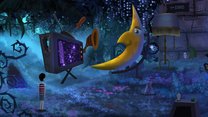
0 Comments
Want to join the discussion? Leave a comment as guest, sign in or register.
Leave a comment